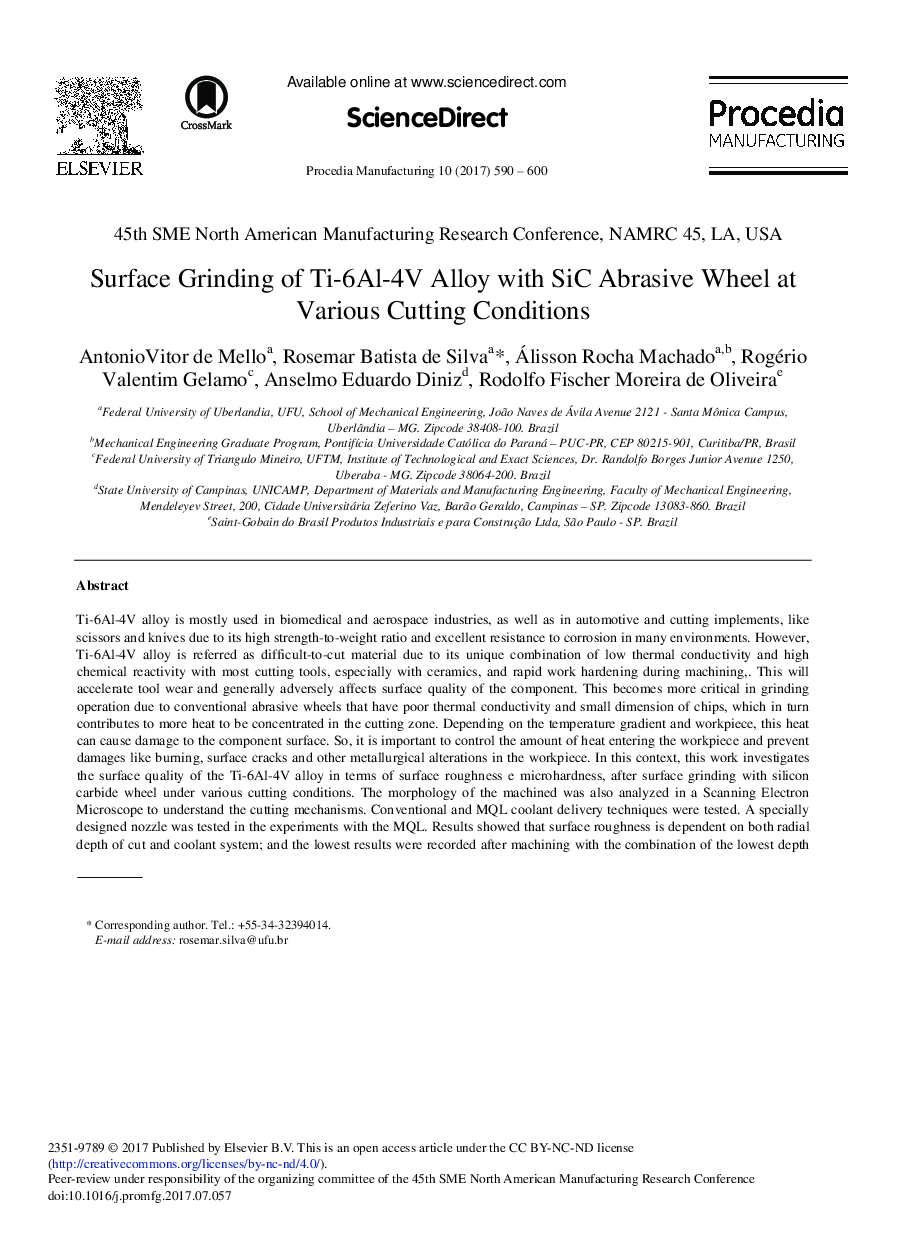| Article ID | Journal | Published Year | Pages | File Type |
|---|---|---|---|---|
| 5128805 | Procedia Manufacturing | 2017 | 11 Pages |
Ti-6Al-4Â V alloy is mostly used in biomedical and aerospace industries, as well as in automotive and cutting implements, like scissors and knives due to its high strength-to-weight ratio and excellent resistance to corrosion in many environments. However, Ti-6Al-4Â V alloy is referred as difficult-to-cut material due to its unique combination of low thermal conductivity and high chemical reactivity with most cutting tools, especially with ceramics, and rapid work hardening during machining,. This will accelerate tool wear and generally adversely affects surface quality of the component. This becomes more critical in grinding operation due to conventional abrasive wheels that have poor thermal conductivity and small dimension of chips, which in turn contributes to more heat to be concentrated in the cutting zone. Depending on the temperature gradient and workpiece, this heat can cause damage to the component surface. So, it is important to control the amount of heat entering the workpiece and prevent damages like burning, surface cracks and other metallurgical alterations in the workpiece. In this context, this work investigates the surface quality of the Ti-6Al-4Â V alloy in terms of surface roughness e microhardness, after surface grinding with silicon carbide wheel under various cutting conditions. The morphology of the machined was also analyzed in a Scanning Electron Microscope to understand the cutting mechanisms. Conventional and MQL coolant delivery techniques were tested. A specially designed nozzle was tested in the experiments with the MQL. Results showed that surface roughness is dependent on both radial depth of cut and coolant system; and the lowest results were recorded after machining with the combination of the lowest depth of cut and MQL technique. With respect to microhardness, little variation was observed after machining with the MQL technique, unlike when machining with conventional method, irrespective the depth of cut employed.
